Do you have a question about the ARRI ARRIFLEX 435 and is the answer not in the manual?
Covers warnings about operational errors, injury, and equipment damage.
Key advice including handling in wet weather and using ARRI replacement parts.
Procedures for safely transporting the camera and accessories.
Recommended tripod heads and secure camera mounting methods.
Ensuring horizontal camera alignment and using bridge plates BP-8/BP-9.
Mounting lens support and details on the grip system.
Instructions for setting up the camera for shoulder operation.
Details on Battery NC 24/7 R, Charger NCL 24 R, and LED indicators.
Information on CHS-1 module and Mains Unit NG 12/24 R.
Details on Mains Unit NG 12/26 R and accessory power supply.
Information on 24V accessories and overload display.
Overview of ARRIFLEX 435 magazines and TC recording capability.
Step-by-step instructions for loading film into the magazine.
Procedure for safely removing exposed film from the magazine.
Recommendations for transporting and storing magazines.
Adjusting the mirror shutter on the ARRIFLEX 435.
Adjusting the electronic mirror shutter on the ARRIFLEX 435ES.
Checking and ensuring the shutter locking mechanism is correctly set.
Shutter angle settings for filming with HMI lighting.
Procedures for exchanging ground glass and cleaning the film gate.
Cleaning and installing the spacer gate and movement system.
Steps for attaching the magazine and threading the film movement.
How to adjust the pitch for optimal film transport.
Procedures for safely removing the magazine from the camera.
Information on compatible lenses and the procedure for attaching them.
Details on the viewfinder system's adjustability and features.
Procedures for removing, attaching, and adjusting the eyepiece diopter.
How to turn, swivel, and extend the viewfinder arm.
Using image compensation and pivoting the contrast filter.
Information on attaching and adjusting the ARRIGLOW module.
Procedures for exchanging format masks and the viewfinder system.
Location and function of the main camera switch.
Detailed steps for starting and stopping camera operation.
How to inch the camera and set operational parameters.
Explanation of display modes, symbols, and warnings.
Displaying, setting, and resetting the film counter.
Setting standard and programmed frame rates.
Switching operation modes and fine-tuning programmed frame rates.
Adjusting phase for monitors and viewing power supply voltage.
Controlling warning signals for asynchronous running and their volume.
Procedures for mounting video optics, cameras, and processors.
Connecting the system and adjusting image position, aperture, and focus.
Details and adjustments for the AVF-2 anamorphic viewfinder.
Information and mounting procedures for the VT-2 video viewfinder.
Using the Work Light WL-3 and Heated Eyecup HE-3.
Using the Remote Run Switch RS-4 and FEM module.
External Synchronization Unit ESU-1 and Camera Control Unit CCU-1.
Overview of CCU-1 menus, speed settings, and shutter control.
Setting time code, user bits, and managing programs (ramps).
Configuring options, async mode, and using the RCU-1.
Using the LCC software for remote control and accounting.
Mounting accessory and R/S socket distributors.
Procedure to turn the lens mount receptacle for Super 35 shooting.
Procedure to convert the bridge plate for Super 35 shooting.
Supported frame rates for time code recording.
Step-by-step instructions for installing the time code module.
Ensuring correct loop length and setting film sensitivity (TCS-Value).
Setting time code time and user bits via CCU-1.
Synchronizing the camera with external time code sources.
How to view time code time and user bits on the camera display.
Switching time code recording on and off, and outputting time code.
Information on the buffer battery and its voltage display.
Understanding time code warnings and display symbols.
General notes on cleaning the camera and accessories safely.
Procedures for cleaning the camera's film gate and spacer gate.
Instructions for cleaning the field lens.
Cleaning the magazine throat and setting friction on ARRIMAG 120.
Information on monitoring defects, film loops, and fuses.
Diagnosing and resolving film scratches on negative sides.
Troubleshooting unsteady images and blurred image problems.
Addressing problems related to extreme low and high temperatures.
Key technical data including format, magazines, lens mount, and shutter.
Specifications for viewfinder, power supply, and time code.
| Camera Type | Film Camera |
|---|---|
| Manufacturer | ARRI |
| Model | ARRIFLEX 435 |
| Film Format | 35mm |
| Variable Shutter | Yes |
| Lens Mount | PL Mount |
| Power Supply | 24V DC |
| Frame Rates | 1-150 fps |
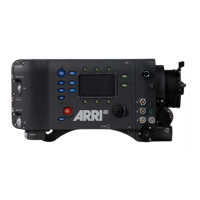
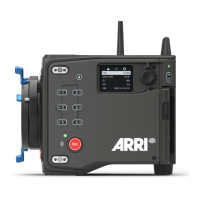
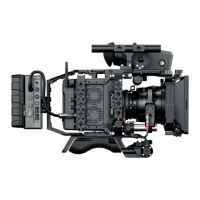
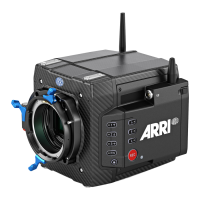
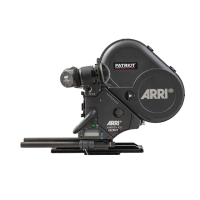
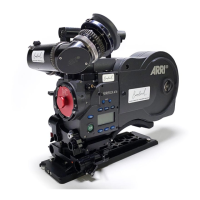
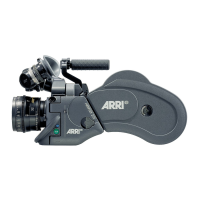
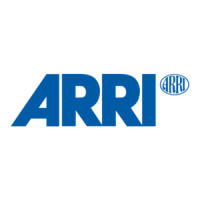
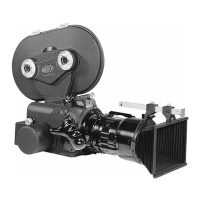
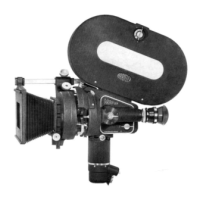
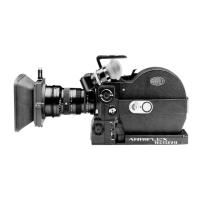
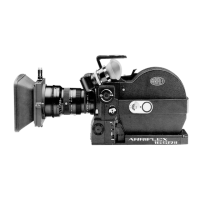
